Introduction
Overview
Welcome to How Tomcat Works. This book dissects Tomcat 4.1.12 and 5.0.18 and
explains the internal workings of its free, open source, and most popular servlet
container code-named Catalina. Tomcat is a complex system, consisting of many
different components. Those who want to learn how Tomcat works often do know
where to start. What this book does is provide the big picture and then build a
simpler version of each component to make understanding that component easier.
Only after that will the real component be explained.
You should start by reading this Introduction as it explains the structure of the book
and gives you the brief outline of the applications built. The section "Preparing the
Prerequisite Software" gives you instructions on what software you need to download,
how to make a directory structure for your code, etc.
Who This Book Is for
This book is for anyone working with the Java technology.
This book is for you if you are a servlet/JSP programmer or a Tomcat user
and you are interested in knowing how a servlet container works.
It is for you if you want to join the Tomcat development team because you
need to first learn how the existing code works.
If you have never been involved in web development but you have interest in
software development in general, then you can learn from this book how a
large application such as Tomcat was designed and developed.
If you need to configure and customize Tomcat, you should read this book.
To understand the discussion in this book, you need to understand object-oriented
programming in Java as well as servlet programming. If you are not familiar with the
latter, there are a plethora of books on sendets, including Budi's Java for the Web
with Servlets, JSP, and EJB. To make the material easier to understand, each
chapter starts with background information that will be required to understand the
topic in discussion.
How A Servlet Container Works
A servlet container is a complex system. However, basically there are three things
that a servlet container does to service a request for a servlet:
�
Creating a request object and populate it with information that may be used
by the invoked servlet, such as parameters, headers, cookies, query string,
URI, etc. A request object is an instance of the javax.servlet.ServletRequest
interface or the javax.servlet.http.ServletRequest interface.
Creating a response object that the invoked servlet uses to send the
response to the web client. A response object is an instance of the
javax.servlet.ServletResponse interface or the
javax.servlet.http.ServletResponse interface.
Invoking the service method of the servlet, passing the request and response
objects. Here the servlet reads the values from the request object and writes
to the response object.
As you read the chapters, you will find detailed discussions of Catalina servlet
container.
Catalina Block Diagram
Catalina is a very sophisticated piece of software, which was elegantly designed and
developed. It is also modular too. Based on the tasks mentioned in the section "How
A Servlet Container Works", you can view Catalina as consisting of two main
modules: the connector and the container.
The block diagram in Figure I.1 is, of course, simplistic. Later in the following
chapters you will unveil all smaller components one by one.
Figure I.1: Catalina's main modules
Now, back to Figure I.1, the connector is there to connect a request with the
container. Its job is to construct a request object and a response object for each
HTTP request it receives. It then passes processing to the container. The container
receives the request and response objects from the connector and is responsible for
invoking the servlet's service method.
Bear in mind though, that the description above is only the tip of the iceberg. There
are a lot of things that a container does. For example, before it can invoke a servlet's
service method, it must load the servlet, authenticate the user (if required), update
the session for that user, etc. It's not surprising then that a container uses many
�
different modules for processing. For example, the manager module is for processing
user sessions, the loader is for loading servlet classess, etc.
Tomcat 4 and 5
This book covers both Tomcat 4 and 5. Here are some of the differences between the
two:
Tomcat 5 supports Servlet 2.4 and JSP 2.0 specifications, Tomcat 4 supports
Servlet 2.3 and JSP 1.2.
Tomcat 5 has a more efficient default connector than Tomcat 4.
Tomcat 5 shares a thread for background processing whereas Tomcat 4's
components all have their own threads for background processing. Therefore,
Tomcat 5 uses less resources in this regard.
Tomcat 5 does not need a mapper component to find a child component,
therefore simplifying the code.
Overview of Each Chapter
There are 20 chapters in this book. The first two chapters serve as an introduction.
Chapter 1 explains how an HTTP server works and Chapter 2 features a simple
servlet container. The next two chapters focus on the connector and Chapters 5 to
20 cover each of the components in the container. The following is the summary of
each of the chapters.
Note For each chapter, there is an accompanying application similar to the
component being explained.
Chapter 1 starts this book by presenting a simple HTTP server. To build a working
HTTP server, you need to know the internal workings of two classes in the java.net
package: Socket and ServerSocket. There is sufficient background information in this
chapter about these two classes for you to understand how the accompanying
application works.
Chapter 2 explains how simple servlet containers work. This chapter comes with two
servlet container applications that can service requests for static resources as well
as very simple servlets. In particular, you will learn how you can create request and
response objects and pass them to the requested servlet's service method. There is
also a servlet that can be run inside the servlet containers and that you can invoke
from a web browser.
�
Chapter 3 presents a simplified version of Tomcat 4's default connector. The
application built in this chapter serves as a learning tool to understand the connector
discussed in Chapter 4.
Chapter 4 presents Tomcat 4's default connector. This connector has been
deprecated in favor of a faster connector called Coyote. Nevertheless, the default
connector is simpler and easier to understand.
Chapter 5 discusses the container module. A container is represented by the
org.apache.catalina.Container interface and there are four types of containers:
engine, host, context, and wrapper. This chapter offers two applications that work
with contexts and wrappers.
Chapter 6 explains the Lifecycle interface. This interface defines the lifecycle of a
Catalina component and provides an elegant way of notifying other components of
events that occur in that component. In addition, the Lifecycle interface provides an
elegant mechanism for starting and stopping all the components in Catalina by one
single start/stop.
Chapter 7 covers loggers, which are components used for recording error messages
and other messages.
Chapter 8 explains about loaders. A loader is an important Catalina module
responsible for loading servlet and other classes that a web application uses. This
chapter also shows how application reloading is achieved.
Chapter 9 discusses the manager, the component that manages sessions in session
management. It explains the various types of managers and how a manager can
persist session objects into a store. At the end of the chapter, you will learn how to
build an application that uses a StandardManager instance to run a servlet that uses
session objects to store values.
Chapter 10 covers web application security constraints for restricting access to
certain contents. You will learn entities related to security such as principals, roles,
login config, authenticators, etc. You will also write two applications that install an
authenticator valve in the StandardContext object and uses basic authentication to
authenticate users.
Chapter 11 explains in detail the org.apache.catalina.core.StandardWrapper class
that represents a servlet in a web application. In particular, this chapter explains how
filters and a servlet's service method are invoked. The application accompanying this
chapter uses StandardWrapper instances to represents servlets.
Chapter 12 covers the org.apache.catalina.core.StandardContext class that
represents a web application. In particular this chapter discusses how a
�
StandardContext object is configured, what happens in it for each incoming HTTP
request, how it supports automatic reloading, and how Tomcat 5 shares a thread that
executes periodic tasks in its associated components.
Chapter 13 presents the two other containers: host and engine. You can also find the
standard implementation of these two containers:
org.apache.catalina.core.StandardHost and
org.apache.catalina.core.StandardEngine.
Chapter 14 offers the server and service components. A server provides an elegant
start and stop mechanism for the whole servlet container, a service serves as a
holder for a container and one or more connectors. The application accompanying
this chapter shows how to use a server and a service.
Chapters 15 explains the configuration of a web application through Digester, an
exciting open source project from the Apache Software Foundation. For those not
initiated, this chapter presents a section that gently introduces the digester library
and how to use it to convert the nodes in an XML document to Java objects. It then
explains the ContextConfig object that configures a StandardContext instance.
Chapter 16 explains the shutdown hook that Tomcat uses to always get a chance to
do clean-up regardless how the user stops it (i.e. either appropriately by sending a
shutdown command or inappropriately by simply closing the console.)
Chapter 17 discusses the starting and stopping of Tomcat through the use of batch
files and shell scripts.
Chapter 18 presents the deployer, the component responsible for deploying and
installing web applications.
Chapter 19 discusses a special interface, ContainerServlet, to give a servlet access
to the Catalina internal objects. In particular, it discusses the Manager application
that you can use to manage deployed applications.
Chapter 20 discusses JMX and how Tomcat make its internal objects manageable by
creating MBeans for those objects.
The Application for Each Chapter
Each chapter comes with one or more applications that focus on a specific
component in Catalina. Normally you'll find the simplified version of the component
being explained or code that explains how to use a Catalina component. All classes
and interfaces in the chapters' applications reside in the ex[chapter
�
number].pyrmont package or its subpackages. For example, the classes in the
application in Chapter 1 are part of the ex01.pyrmont package.
Preparing the Prerequisite Software
The applications accompanying this book run with J2SE version 1.4. The zipped
source files can be downloaded from the authors' web site www.brainysoftware.com.
It contains the source code for Tomcat 4.1.12 and the applications used in this book.
Assuming you have installed J2SE 1.4 and your path environment variable includes
the location of the JDK, follow these steps:
1. Extract the zip files. All extracted files will reside in a new directory called
HowTomcatWorks. HowTomcatWorks is your working directory. There will
be several subdirectories under HowTomcatWorks, including lib (containing
all needed libraries), src (containing the source files), webroot (containing an
HTML file and three sample servlets), and webapps (containing sample
applications).
2. Change directory to the working directory and compile the java files. If you
are using Windows, run the win-compile.bat file. If your computer is a Linux
machine, type the following: (don't forget to chmod the file if necessary)
./linux-compile.sh
Note More information can be found in the Readme.txt file included in the ZIP file.
�
Chapter 1: A Simple Web Server
This chapter explains how Java web servers work. A web server is also called a
Hypertext Transfer Protocol (HTTP) server because it uses HTTP to communicate
with its clients, which are usually web browsers. A Java-based web server uses two
important classes: java.net.Socket and java.net.ServerSocket, and communications
are done through HTTP messages. It is therefore natural to start this chapter with a
discussion of HTTP and the two classes. Afterwards, it goes on to explain the simple
web server application that accompanies this chapter.
The Hypertext Transfer Protocol (HTTP)
HTTP is the protocol that allows web servers and browsers to send and receive data
over the Internet. It is a request and response protocol. The client requests a file
and the server responds to the request. HTTP uses reliable TCP connections—by
default on TCP port 80. The first version of HTTP was HTTP/0.9, which was then
overridden by HTTP/1.0. Replacing HTTP/1.0 is the current version of HTTP/1.1,
which is defined in Request for Comments (RFC) 2616 and downloadable from
http://www.w3.org/Protocols/HTTP/1.1/rfc2616.pdf.
Note This section covers HTTP 1.1 only briefly and is intended to help you
understand the messages sent by web server applications. If you are interested
in more details, read RFC 2616.
In HTTP, it is always the client who initiates a transaction by establishing a
connection and sending an HTTP request. The web server is in no position to
contact a client or make a callback connection to the client. Either the client or the
server can prematurely terminate a connection. For example, when using a web
browser you can click the Stop button on your browser to stop the download process
of a file, effectively closing the HTTP connection with the web server.
HTTP Requests
An HTTP request consists of three components:
Method—Uniform Resource Identifier (URI)—Protocol/Version
Request headers
Entity body
An example of an HTTP request is the following:
POST /examples/default.jsp HTTP/1.1
�
Accept: text/plain; text/html
Accept-Language: en-gb
Connection: Keep-Alive
Host: localhost
User-Agent: Mozilla/4.0 (compatible; MSIE 4.01; Windows 98)
Content-Length: 33
Content-Type: application/x-www-form-urlencoded
Accept-Encoding: gzip, deflate
lastName=Franks&firstName=Michael
The method—URI—protocol version appears as the first line of the request.
POST /examples/default.jsp HTTP/1.1
where POST is the request method, /examples/default.jsp represents the URI and
HTTP/1.1 the Protocol/Version section.
Each HTTP request can use one of the many request methods as specified in the
HTTP standards. The HTTP 1.1 supports seven types of request: GET, POST,
HEAD, OPTIONS, PUT, DELETE, and TRACE. GET and POST are the most
commonly used in Internet applications.
The URI specifies an Internet resource completely. A URI is usually interpreted as
being relative to the server's root directory. Thus, it should always begin with a
forward slash /. A Uniform Resource Locator (URL) is actually a type of URI (see
http://www.ietf.org/rfc/rfc2396.txt). The protocol version represents the version of
the HTTP protocol being used.
The request header contains useful information about the client environment and the
entity body of the request. For example, it could contain the language the browser is
set for, the length of the entity body, and so on. Each header is separated by a
carriage return/linefeed (CRLF) sequence.
Between the headers and the entity body, there is a blank line (CRLF) that is
important to the HTTP request format. The CRLF tells the HTTP server where the
entity body begins. In some Internet programming books, this CRLF is considered
the fourth component of an HTTP request.
In the previous HTTP request, the entity body is simply the following line:
lastName=Franks&firstName=Michael
The entity body can easily become much longer in a typical HTTP request.
�

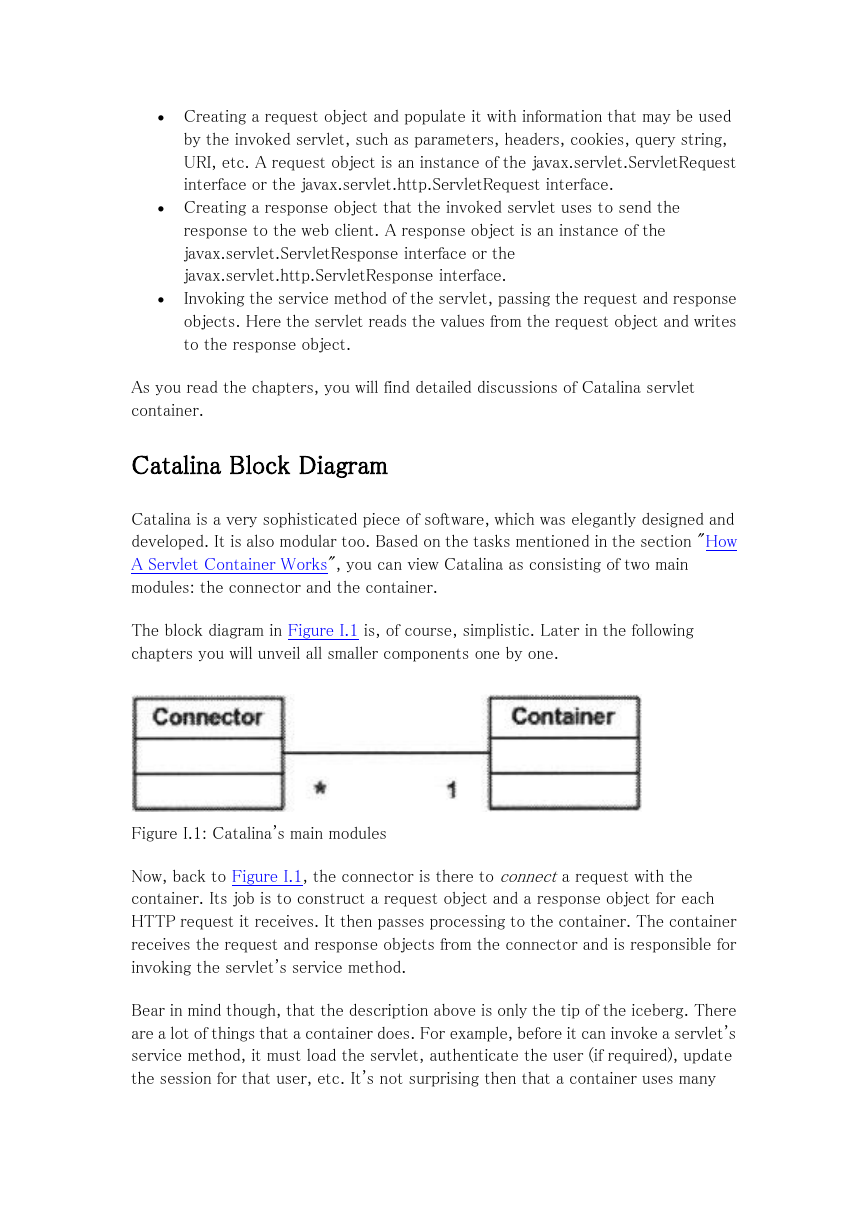

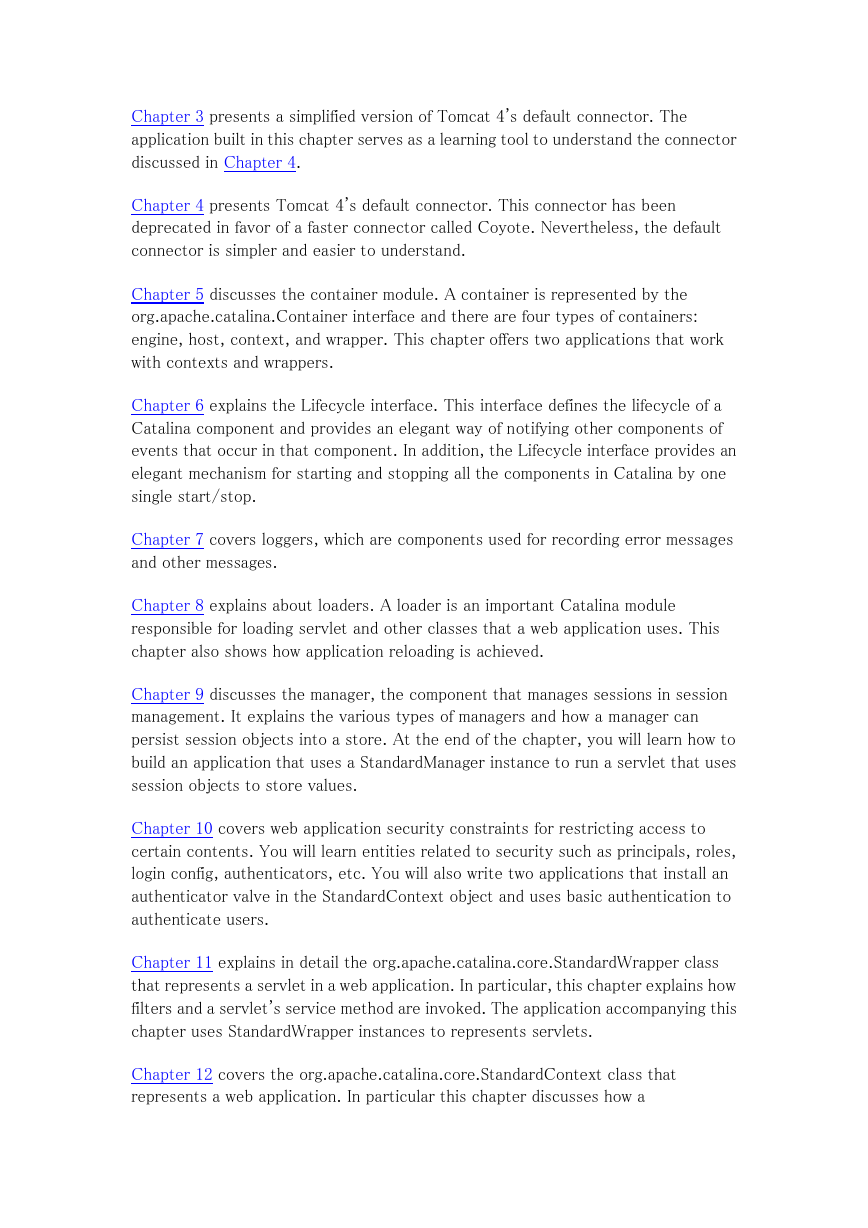
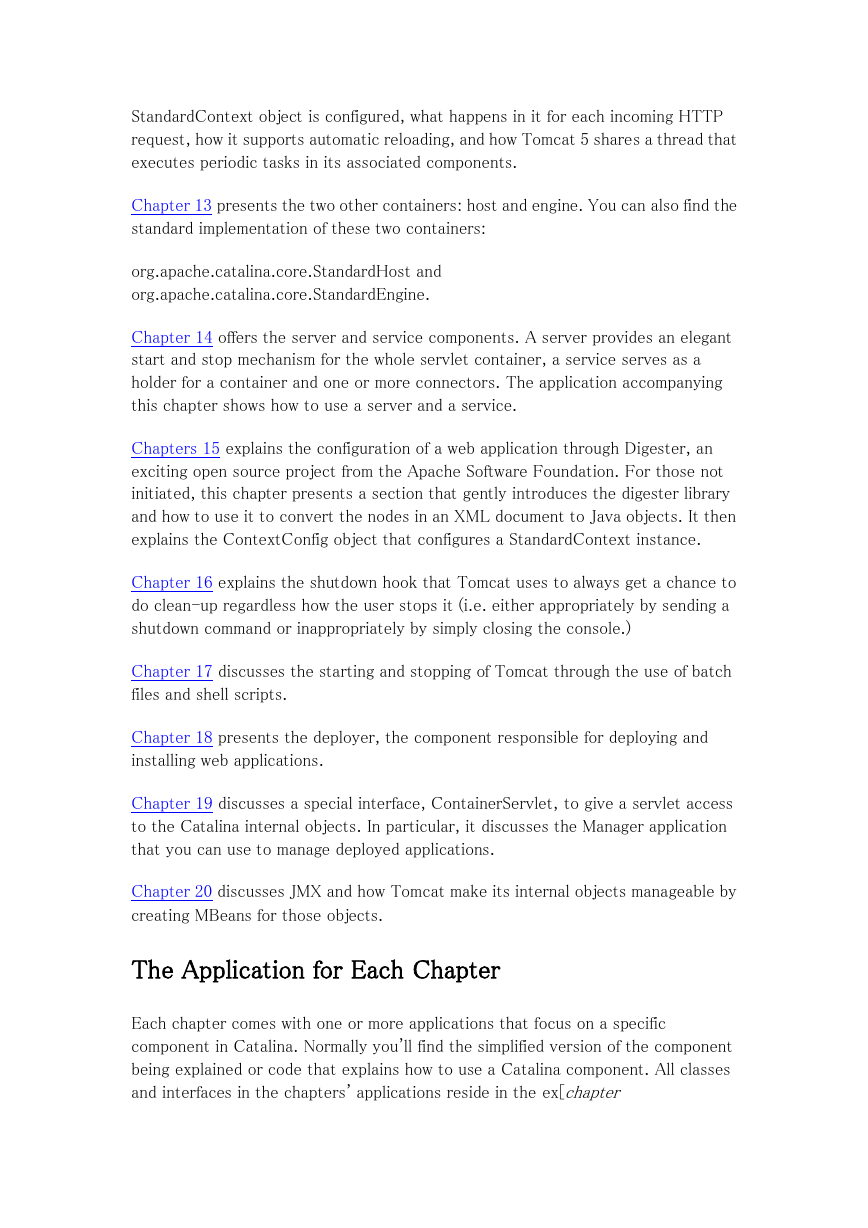
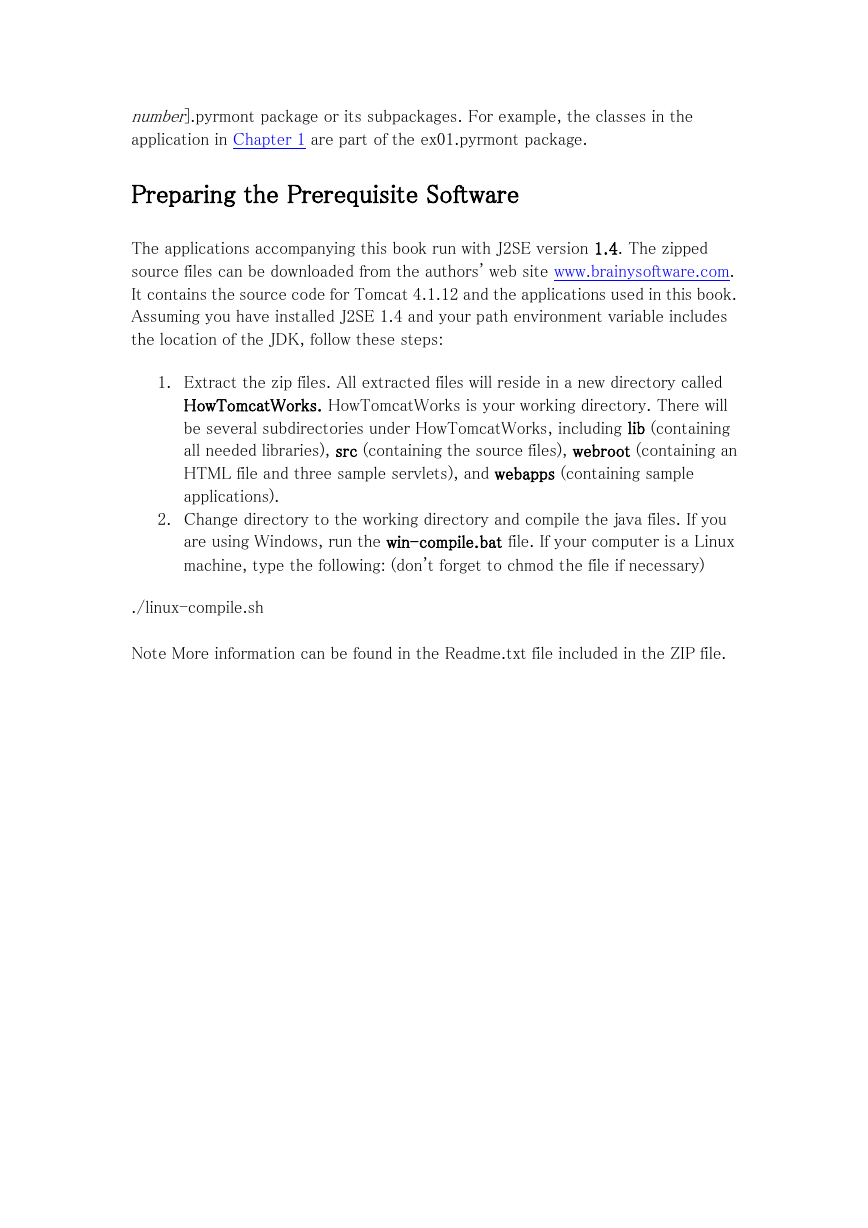
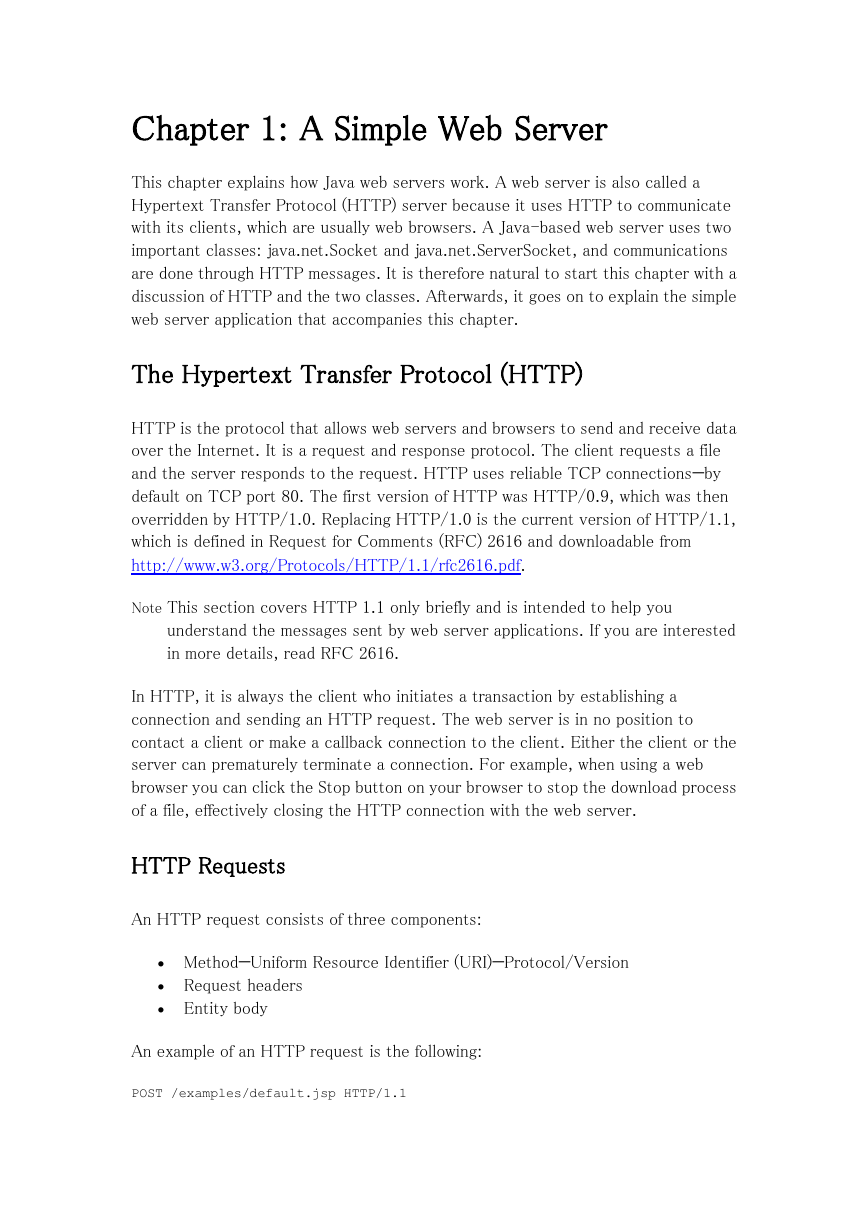
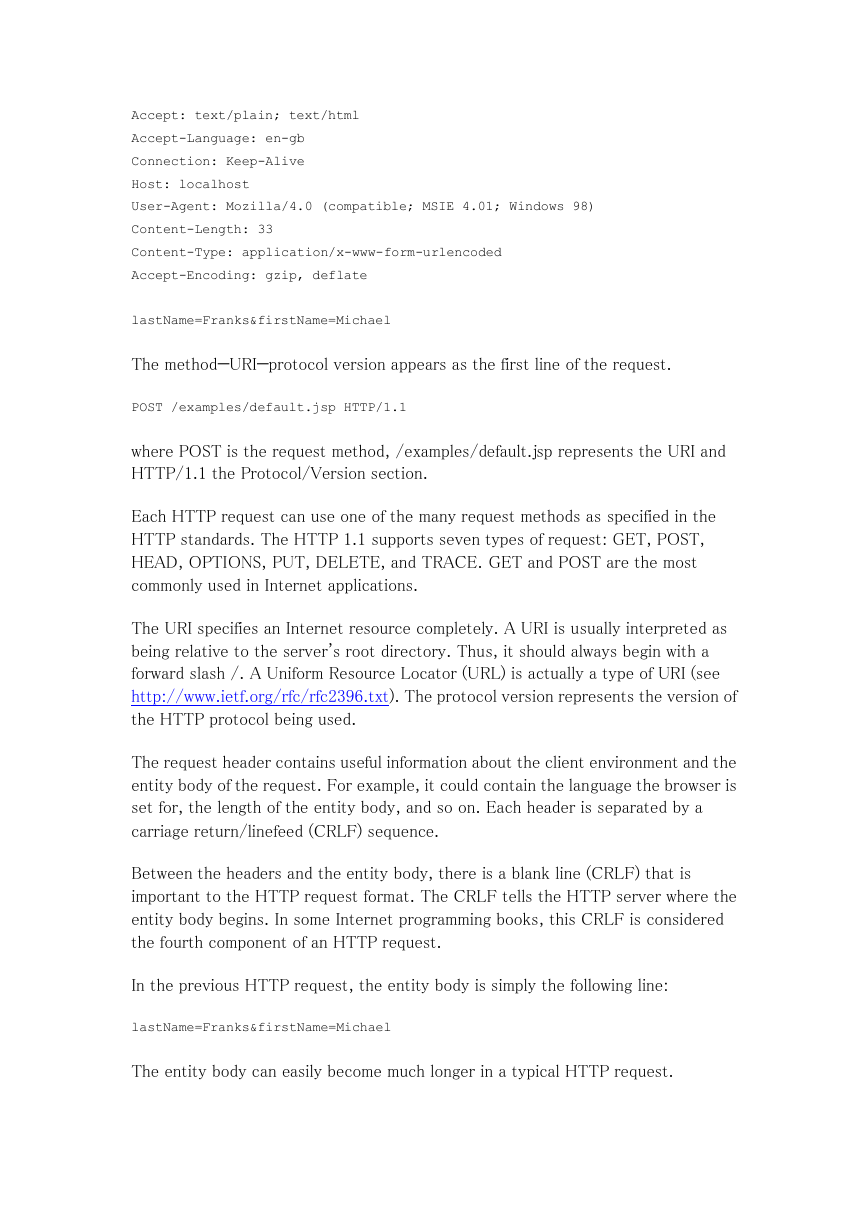








 2023年江西萍乡中考道德与法治真题及答案.doc
2023年江西萍乡中考道德与法治真题及答案.doc 2012年重庆南川中考生物真题及答案.doc
2012年重庆南川中考生物真题及答案.doc 2013年江西师范大学地理学综合及文艺理论基础考研真题.doc
2013年江西师范大学地理学综合及文艺理论基础考研真题.doc 2020年四川甘孜小升初语文真题及答案I卷.doc
2020年四川甘孜小升初语文真题及答案I卷.doc 2020年注册岩土工程师专业基础考试真题及答案.doc
2020年注册岩土工程师专业基础考试真题及答案.doc 2023-2024学年福建省厦门市九年级上学期数学月考试题及答案.doc
2023-2024学年福建省厦门市九年级上学期数学月考试题及答案.doc 2021-2022学年辽宁省沈阳市大东区九年级上学期语文期末试题及答案.doc
2021-2022学年辽宁省沈阳市大东区九年级上学期语文期末试题及答案.doc 2022-2023学年北京东城区初三第一学期物理期末试卷及答案.doc
2022-2023学年北京东城区初三第一学期物理期末试卷及答案.doc 2018上半年江西教师资格初中地理学科知识与教学能力真题及答案.doc
2018上半年江西教师资格初中地理学科知识与教学能力真题及答案.doc 2012年河北国家公务员申论考试真题及答案-省级.doc
2012年河北国家公务员申论考试真题及答案-省级.doc 2020-2021学年江苏省扬州市江都区邵樊片九年级上学期数学第一次质量检测试题及答案.doc
2020-2021学年江苏省扬州市江都区邵樊片九年级上学期数学第一次质量检测试题及答案.doc 2022下半年黑龙江教师资格证中学综合素质真题及答案.doc
2022下半年黑龙江教师资格证中学综合素质真题及答案.doc